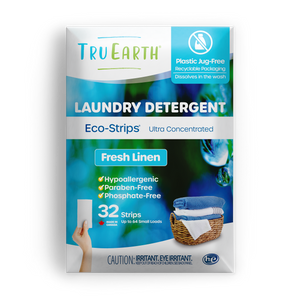Are clover patches turning your once-green lawn into a sea of unwanted greenery? In this detailed guide, we'll walk you through the steps to regain control and transform your lawn into the lush paradise you desire. Learn effective strategies, from understanding clover's role to implementing practical removal techniques.

Understanding Clover in Lawns
Before we look at removal strategies, it's essential to understand clover's role in lawns and its impact on your green space.
Clover as a Nitrogen Fixer
Clover is a nitrogen-fixing plant, which means it takes nitrogen from the air and stores it in its roots. While this benefits the soil, an excessive presence can lead to an imbalance, affecting the overall health of your lawn.
Why Clover Thrives
Clover thrives in lawns with low nitrogen levels, compacted soil, or insufficient mowing. Recognizing these conditions is the first step in effective clover control. Additionally, clover is a resilient plant that can survive in various soil conditions, making it important to address its presence promptly.
Assessing Your Lawn
Before exploring removal methods, take a closer look at your lawn to identify the extent of the clover invasion and assess any contributing factors.
Clover Density
Evaluate the density of clover patches. Are they scattered or concentrated in specific areas? Understanding the distribution helps tailor your removal strategy. Large patches may require more intensive removal methods, while scattered patches may be manageable with less invasive approaches.
Soil Quality Check
Assess the quality of your soil. Is it compacted, lacking in nutrients, or poorly drained? Addressing soil issues is essential to preventing clover from making a comeback.
Conducting a comprehensive soil test can provide valuable insights into nutrient levels and guide your lawn care practices for a healthier, clover-resistant lawn.
Choosing the Right Removal Method
Not all removal methods are created equal. Select the approach that aligns with your preferences and the specific conditions of your lawn.
Mechanical Removal
Hand-pulling or mowing can be effective for small clover patches. Ensure you reach the roots to prevent regrowth, and regularly mow your lawn to discourage clover growth. Mowing at a slightly higher height can help shade the soil and hinder clover development.
Chemical Control
Consider herbicides specifically formulated for clover control. Read and follow product instructions carefully, and choose products that won't harm your desired grass species.
It's essential to use herbicides responsibly, following recommended application rates and safety guidelines to protect your lawn and the environment.
Lawn Care Practices for Clover Prevention
Prevention is key to maintaining a clover-free lawn. Adopting healthy lawn care practices will contribute to a resilient and robust grass cover.
Proper Mowing Height
Set your mower at the recommended height for your grass type. Taller grass shades the soil, making it less conducive to clover growth. Regular mowing also prevents clover from producing flowers and seeds, reducing its spread.
Adequate Fertilization
Ensure your lawn receives proper and balanced fertilization. Regularly feed your grass with a nitrogen-rich fertilizer to discourage clover, promoting a healthier lawn overall. Consider slow-release fertilizers to provide a steady nutrient supply without promoting excessive clover growth.
Natural Alternatives for Clover Control
Explore eco-friendly alternatives for clover control, incorporating natural elements into your lawn care routine.
White Vinegar Solution
Create a white vinegar solution (1 part vinegar to 1 part water) and spray it on clover patches. Be cautious not to overspray, as vinegar can affect the surrounding grass. This natural alternative is gentle on the environment and can effectively treat spot.
Corn Gluten Meal
Use corn gluten meal as a natural pre-emergent herbicide. This byproduct of corn processing inhibits clover germination without harming established grass. It's a pet-friendly option that aligns with environmentally conscious lawn care practices.
Fine-Tuning Your Strategy
Every lawn is unique, and adjustments may be necessary based on your lawn's response to removal methods.
Monitoring Progress
Regularly monitor your lawn's progress after implementing removal strategies. Adjust your approach based on the effectiveness of the chosen methods. If clover persists, consider combining mechanical and chemical methods for a more comprehensive solution.
Reassessing Soil Conditions
Periodically reassess your soil conditions. Conduct soil tests to ensure your lawn receives the right balance of nutrients, addressing potential factors that could encourage clover growth. A proactive approach to soil health can contribute to long-term clover control.
Celebrating Your Clover-Free Lawn
As you witness the transformation of your lawn, take a moment to appreciate your efforts and the newfound vibrancy of your grass.
- Maintaining Your Success: Continue practicing healthy lawn care habits to maintain a clover-free environment. Regular mowing, proper fertilization, and soil care are essential components of long-term success. Celebrate your commitment to a green, clover-free lawn by maintaining these practices throughout the seasons.
- Sharing Success Stories: Share your success with friends and neighbors who may be dealing with clover issues. Exchange tips and insights to create a community of lawn enthusiasts dedicated to achieving lush, green lawns. By sharing your experience, you contribute to a collective effort to create beautiful and clover-free outdoor spaces.

Cultivating Your Clover-Free Paradise
Removing clover from your lawn is a manageable and rewarding endeavor. By understanding clover's role, assessing your lawn's conditions, and implementing targeted removal strategies, you can create a green oasis to be proud of. Embrace the process, celebrate your successes, and enjoy the beauty of a clover-free lawn!


